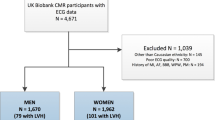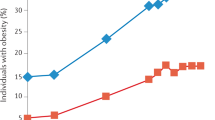Abstract
The diagnosis of cardiovascular illnesses uses multiple modalities in order to obtain a complete and as robust as possible assessment of the heart. However, when addressing distinct pathologies, not all information might be needed in order to achieve a confident-enough diagnosis.
We propose a probabilistic machine learning method to identify the patients for which the acquisition of more complex data would be useful. We hypothesise that there exists a hierarchical relationship between modalities: echocardiography is more accessible and has a lower economical cost than other modalities (like magnetic resonance imaging (MRI)). The framework consists of two classifier models, each predicting the illness from the echocardiographic and MRI views, and a sample-weighting model that combines both predictions. This weighting model is used to decide which individuals will not need an MRI acquisition additional to the echocardiographic examination.
We illustrated this on a dataset of asymptomatic individuals with an echocardiographic study (N = 480), a subset of those also includes a MRI (N = 159). We analyse the effect of being overweight on cardiac geometry. We identified that the type of remodelling depended on blood pressure: overweight combined with high blood pressure resulted in an increase of ventricular mass, while only size changes were preserved for low-pressure individuals. With our method, we established that boundary cases of the former group could be correctly classified after incorporating MRI, while it was not the case for the latter.
Access this chapter
Tax calculation will be finalised at checkout
Purchases are for personal use only
Similar content being viewed by others
References
Obesity: preventing and managing the global epidemic. Report of a WHO consultation. Technical report (2000)
Crispi, F., et al.: Exercise capacity in young adults born small for gestational age. JAMA Cardiol. 6(11), 1308–1316 (2021)
Devlin, A., Moore, N., Ostman-Smith, I.: A comparison of MRI and echocardiography in hypertrophic cardiomyopathy. Br. J. Radiol. 72, 258–264 (1999)
Frazier, P.I.: A Tutorial on Bayesian Optimization (2018)
Garbi, M., et al.: EACVI appropriateness criteria for the use of cardiovascular imaging in heart failure derived from European National Imaging Societies voting. Eur. Heart J. Cardiovasc. Imaging 17, 711–721 (2016)
Gorriz, M., Carlier, A., Faure, E., Giró i Nieto, X.: Cost-effective active learning for melanoma segmentation. CoRR arXiv:1711.09168 (2017)
Grossman, W., Jones, D., McLaurin, L.: Wall stress and patterns of hypertrophy in the human left ventricle. J. Clin. Investig. 56, 56–64 (1975)
Lang, R., Badano, L., Mor-Avi, V., et al.: Recommendations for Cardiac Chamber Quantification by echocardiography in adults. Eur. Heart J. Cardiovasc. Imaging 28, 1-39.e14 (2015)
Li, Y., Yang, M., Zhang, Z.: A survey of multi-view representation learning. IEEE Trans. Knowl. Data Eng. 31, 1863–83 (2019)
Matthews, A., van der Wilk, M., Nickson, T., et al.: GPflow: a Gaussian process library using TensorFlow. J. Mach. Learn. Res. 18, 1–6 (2017)
Nickisch, H., Rasmussen, C.: Approximations for binary Gaussian process classification. J. Mach. Learn. Res. 9, 2035–78 (2008)
Russo, C., Jin, Z., Homma, S., et al.: Effect of obesity and overweight on left ventricular diastolic function. J. Am. Coll. Cardiol. 57, 1368–74 (2011)
Sabuncu, M., Yeo, B., Van Leemput, K., et al.: A generative model for image segmentation based on label fusion. IEEE Trans. Med. Imaging 29, 1714–29 (2010)
Wilson, P., D’Agostino, R., Sullivan, L., et al.: Overweight and obesity as determinants of cardiovascular risk. Arch. Intern. Med. 162, 1867 (2002)
Yang, Y., Loog, M.: Active learning using uncertainty information. In: 2016 23rd International Conference on Pattern Recognition (ICPR), pp. 2646–2651. IEEE (2016)
Acknowledgements
This project has been partially funded with support the French ANR (LABEX PRIMES of Univ. Lyon [ANR-11-LABX-0063] and the JCJC project “MIC-MAC” [ANR-19-CE45-0005]), the Erasmus + Programme of the European Union (Framework Agreement number: 2013-0040), “la Caixa” Foundation (LCF/PR/ GN14/10270005, LCF/PR/GN18/10310003), the Instituto de Salud Carlos III (PI14/00226, PI17/00675) integrated in “Plan Nacional de I+D+I” and cofinanciated by ISCIII-Subdirección General de Evaluación and Fondo Europeo de Desarrollo Regional (FEDER) “Una manera de hacer Europa”, and AGAUR 2017 SGR grant #1531.
Author information
Authors and Affiliations
Corresponding author
Editor information
Editors and Affiliations
Rights and permissions
Copyright information
© 2022 Springer Nature Switzerland AG
About this paper
Cite this paper
Bernardino, G. et al. (2022). Hierarchical Multi-modality Prediction Model to Assess Obesity-Related Remodelling. In: Puyol Antón, E., et al. Statistical Atlases and Computational Models of the Heart. Multi-Disease, Multi-View, and Multi-Center Right Ventricular Segmentation in Cardiac MRI Challenge. STACOM 2021. Lecture Notes in Computer Science(), vol 13131. Springer, Cham. https://doi.org/10.1007/978-3-030-93722-5_12
Download citation
DOI: https://doi.org/10.1007/978-3-030-93722-5_12
Published:
Publisher Name: Springer, Cham
Print ISBN: 978-3-030-93721-8
Online ISBN: 978-3-030-93722-5
eBook Packages: Computer ScienceComputer Science (R0)





